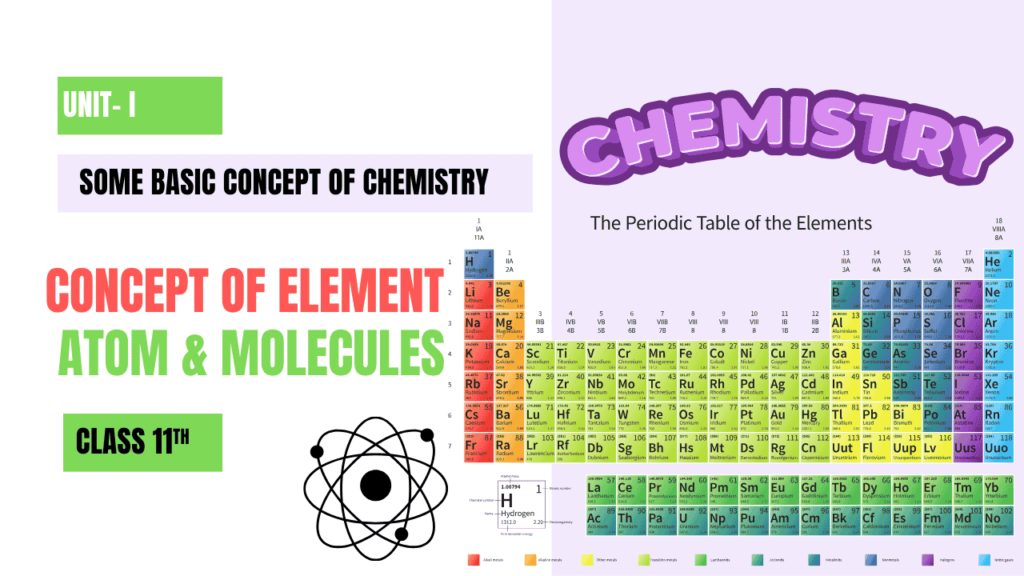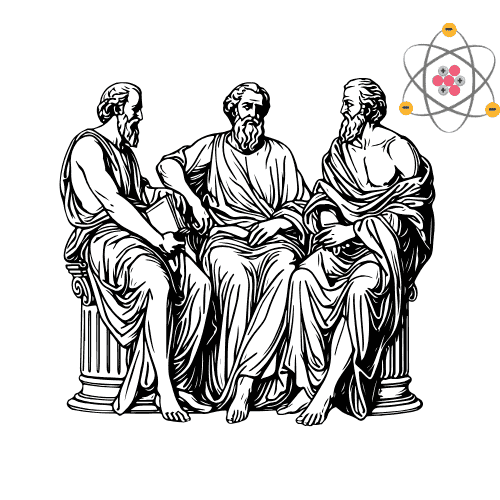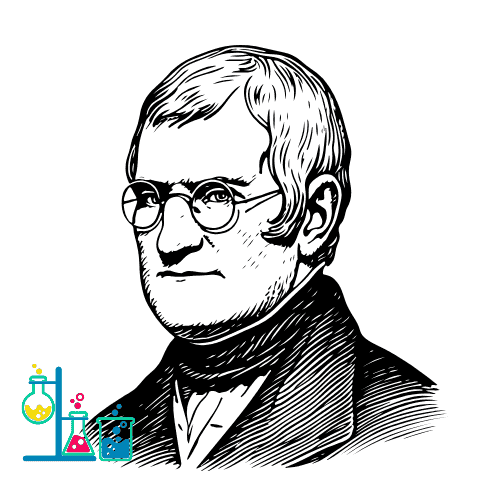
Elements, Atoms & Molecules
Unit-I: Some Basic Concepts of Chemistry | JKBOSE Class 11
Elements
Definition: Pure substances consisting of only one type of atom that cannot be broken down into simpler substances by chemical means.
- Metals: Iron (Fe), Copper (Cu)
- Non-metals: Oxygen (O₂), Carbon (C)
- Noble gases: Helium (He), Neon (Ne)

Antoine Lavoisier (1743-1794)
Father of modern chemistry who compiled the first list of 33 elements in 1789. Classified elements into metals and non-metals.
Atoms
Definition: The smallest unit of an element that retains its chemical properties. Composed of subatomic particles (protons, neutrons, electrons).
- Nucleus: Protons (+) & Neutrons (neutral)
- Electron Cloud: Electrons (-) orbiting nucleus
- Size: ~0.1-0.5 nm diameter (1 nm = 10⁻⁹ m)

John Dalton (1766-1844)
Proposed atomic theory (1808) stating all matter is made of indivisible atoms. Represented elements with symbols (⏀ for oxygen).
Molecules
Definition: Groups of two or more atoms held together by chemical bonds. Can be elements (O₂) or compounds (H₂O).
- Diatomic: O₂, N₂, HCl
- Triatomic: O₃, H₂O
- Polyatomic: CH₄, C₆H₁₂O₆

Amedeo Avogadro (1776-1856)
Proposed that equal volumes of gases contain equal molecules at same temp/pressure (Avogadro’s Law). The mole concept honors him.
Key Differences
| Feature | Element | Atom | Molecule |
|---|---|---|---|
| Composition | One type of atom | Protons, neutrons, electrons | Two or more bonded atoms |
| Smallest Unit | Atom | Cannot be divided chemically | Can be divided into atoms |
| Example | Gold (Au) | Single Au atom | O₂ (oxygen gas) |
| Properties | Defined by atomic number | Same as element | May differ from constituent atoms |